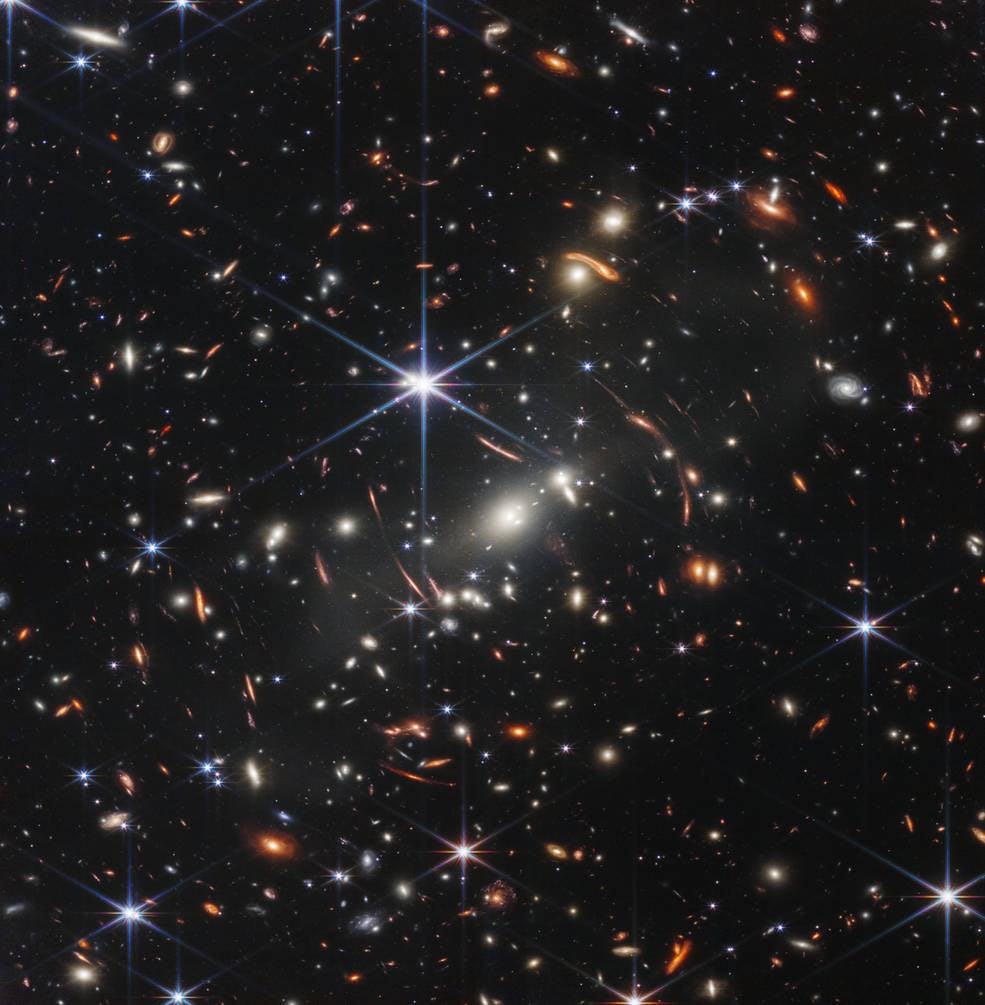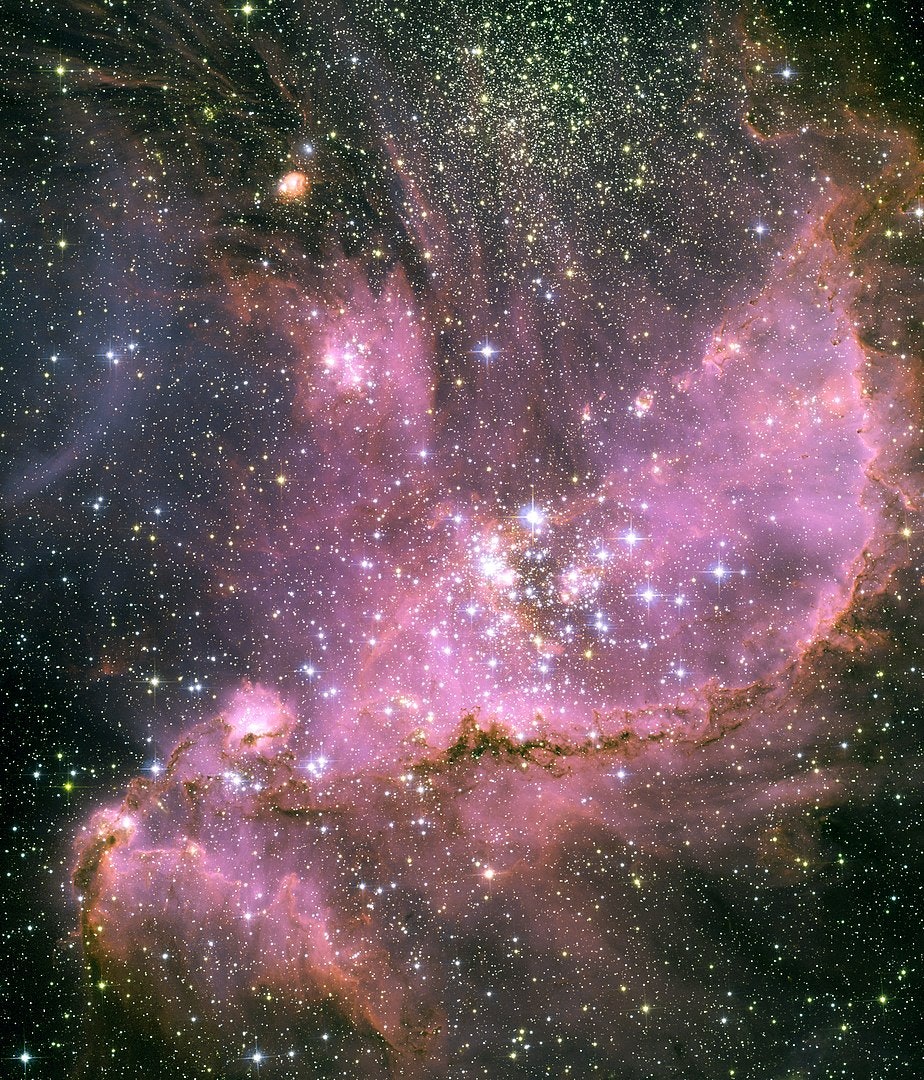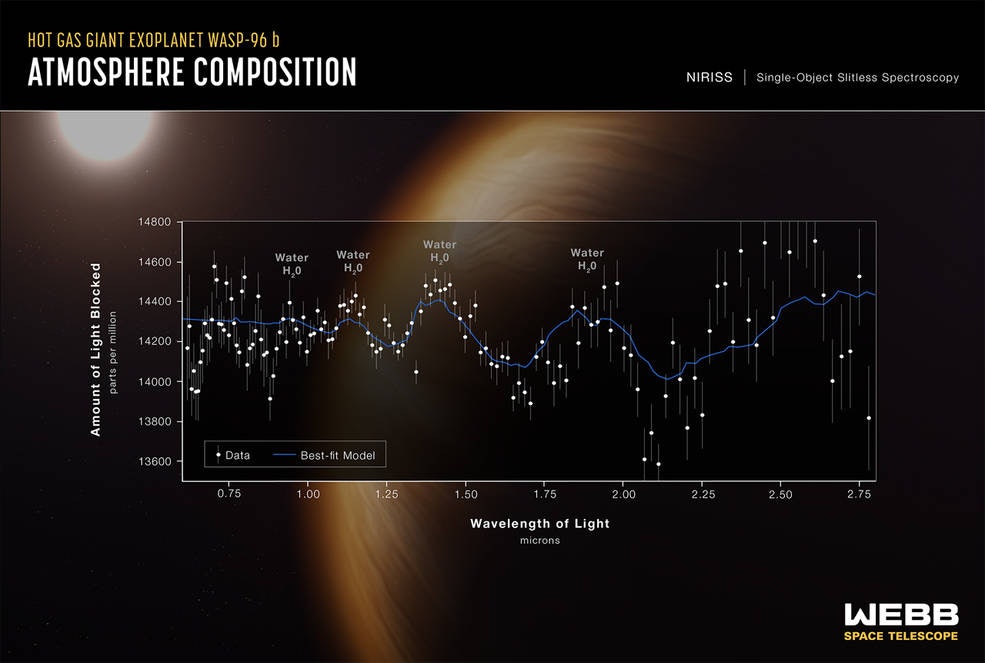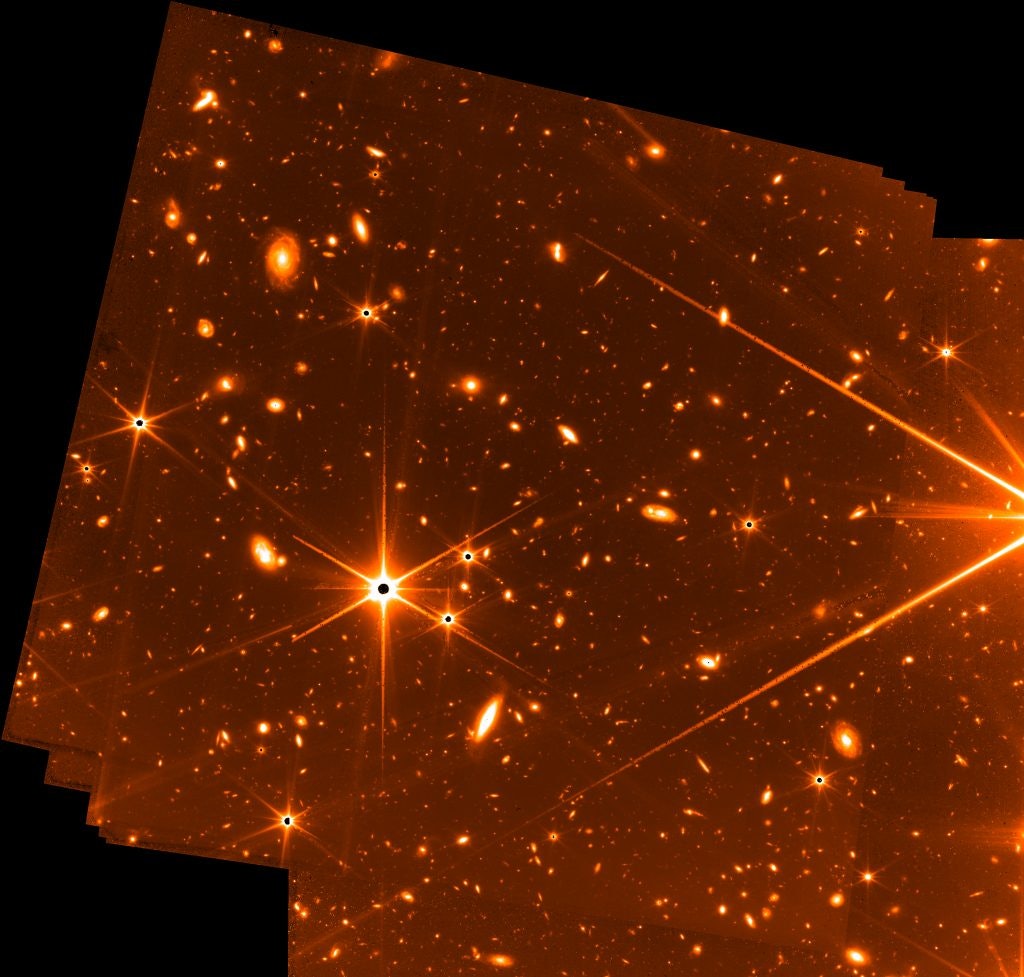
If you’re looking forward to the next full-color images from the James Webb Space Telescope, you don’t have to wait long — but there will still be a wait.
The Webb Telescope's next full-color image release is “tentatively slated for the week of August 1st," Christine Pulliam at the Space Telescope Science Institute tells Inverse. At the moment, "no decisions have been made" regarding the next images the Webb team will prepare for public release, but here are a few of the things that may be on the shortlist, based on Webb's recent and upcoming observation schedule.
Another mind-blowing deep field
Webb’s next image release may include another, even deeper look into the ancient universe – but with even more galaxies.
Science operations had already started by the time the public saw Webb’s first full-color images on Tuesday, so some of the images released in early August will likely come from those earliest real science observations. And those observations, according to University of Montreal astronomer Rene Doyon, include more deep field data.

“Remember that the deep field we have here is a very small region that goes deep, but many of the programs are looking at observing many more galaxies – many, many thousands in a wider area of the sky,” he said in a press conference on Tuesday.
A giant planet in our own Solar System
Webb’s NIRCam will take a series of images of Jupiter’s faint rings on July 15, and over the next couple of weeks, it’s scheduled to observe the gas giant’s south pole and iconic Great Red Spot.

Principal investigator Imke de Pater tells Inverse that processing all that data will take some time, but adds, “We hope we can release some nice images before all the data analysis is done, but we’ll have to see.” It’s also possible that Webb’s image processing team may prepare a few of those images for the public in the meantime.
And on July 12, Webb’s NIRCam imaged the ice giant Neptune, an interesting world in its own right but often overshadowed by Uranus.
A nearby star with an exoplanet

Something strange is happening in the upper layers of the star HD 149026, also called Ogma.
The yellow subgiant star is about half the age of our Sun, but because it’s slightly more massive (about 1.3 times the mass of our Sun), it burns through its inner fuel supply much faster than our smaller star. So while our 4.6-billion-year-old Sun is still fusing hydrogen atoms into helium deep in its core, Ogma has nearly run out of hydrogen. Soon it will become a red giant, like nearby Betelgeuse.
At this stage of its life, Ogma should be mostly hydrogen and helium. But based on previous observations with other telescopes, Ogma contains more carbon and other heavy elements than it should. Astronomers aren’t sure if that’s because something unusual is happening inside the star, or if its surface has been “polluted” by heavier material that fell into the star. Webb’s NIRCam may be able to shed some light on the mystery when it observes Ogma on July 15.
NIRCam may also catch a glimpse of Ogma’s exoplanet, HD 149026 b or Smertrios, a gas giant about 75 percent as wide as Jupiter but only 36 percent of Jupiter’s mass, which orbits its host star at a daringly close 0.042 astronomical units (ten times closer than Mercury’s orbit around our Sun). Smertrios’ upper atmosphere is dark and cloudy — and some of those clouds may contain titanium gas.
A cluster of huge, bright stars

The brightest, most massive stars in the galaxy are also the rarest: type OB stars are hot blue-white stars, 2 to 16 times more massive than our Sun and as hot as 30,000 Kelvin on their surfaces. These massive stars live fast and die young, which is why they’re so rare. But they also tend to form in groups, called OB associations.
Stellar cluster NGC 346 is an OB association in the nearby Small Magellanic Cloud, and Webb will aim its NIRCam and MIRI instruments at the cluster on July 16.
A supernova

The last time anyone on Earth could see a supernova with our unaided eyes was early 1987, when a star in the Large Magellanic Cloud exploded in a bright blaze of hot gas, dust, and radiation. (Well, technically early 1987 is just when the news — in the form of light from the star’s death throes — finally reached Earth.) Although its light has faded, the remnants of SN 1987A are still visible to telescopes, and Webb’s NIRCam and MIRI instruments will take a good look on July 16.
SN 1987A is now a nebula: a cloud of gas and dust expanding into space, with the remains of a dead star at its center. It’s the same type of cosmic object as the Southern Ring Nebula featured in Webb’s first full-color images, so no matter when we get to see Webb’s views of SN 1987A, they’re sure to be spectacular.
A distant, watery galaxy

Last year, a radio observatory in Chile (the Atacama Large Millimeter Array, or ALMA) spotted evidence of water and carbon dioxide in one of the oldest, most distant galaxies astronomers have ever studied: SPT0311. The galaxy is about 12.88 billion light years away, which means we’re seeing it as it looked about 12.88 billion years ago, about a billion years after the Big Bang. And at the time, SPT0311 was about 780 million years old; that’s fairly young for a galaxy, but it means SPT0311 must have formed in the first few hundred million years of our universe’s existence.
Webb’s MIRI instrument will observe this ancient galaxy — and its evidence of the oldest known water in the universe — on July 17. MIRI will produce images of SPT0311, but it will also measure the galaxy’s chemical spectrum, the particular wavelengths of light emitted and absorbed by each of the chemicals that make up the galaxy. That could tell astronomers more about how much water and carbon dioxide the early galaxy contained, and where they were located.
A stunning spiral galaxy

NGC-628, also called Messier 74, is the Platonic ideal of a spiral galaxy, and Webb’s MIRI and NIRCam instruments will take the most detailed images yet on July 17.
More exoplanet spectra

The next image release from Webb may not be images at all: We may see more exoplanet spectra, like the one published for WASP-96b on Tuesday. Although not as visually appealing as full-color images, spectra could reveal some stunning information about alien worlds.
Webb made its first observations of the TRAPPIST-1 system — home to at least 7 Earth-sized exoplanets in its habitable zone — with NIRSpec on July 11, and it will spend another few hours watching the system on July 17. Those observations could reveal the chemical makeup of the TRAPPIST planets’ atmospheres, which could include evidence of habitability — or even life.
NIRSpec also gathered data from WASP-39, home of at least one “hot Jupiter” gas giant, on July 10. And NIRISS took spectra of WASP-52 and HAT-P-1, both of which also host gas giants in very close orbits, on July 12.
Commissioning data and targeting images

While we wait to find out what will be in Webb’s next full-color image release, we can look forward to some less glamorous but still very interesting imagery and data in the telescope’s commissioning data, which is scheduled for release on Thursday. And Webb’s team may also decide to release images from the telescope’s targeting camera, the Fine Guidance Sensor, similar to the record-setting image released on July 7.







